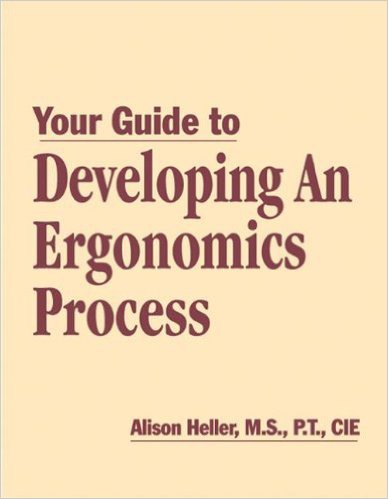Over the last three decades, I have focused on various themes to develop my consulting theories and practices. The research papers found in this library are a part of the Worksite International Legacy. They focus on ergonomics process design and management, ergonomic chair assessment strategies, the use of ergonomics for workers' compensation, disability management, laboratory ergonomics, and the Physical Therapist's role in the ergonomics marketplace.
The scientific papers listed here have been peer review and presented at national and international ergonomics conferences throughout my career based on research and onsite experience with my clients. I hope you find them valuable and helpful to achieve ergonomics success. You can freely download what interests you from our Research Library.
In this study, the framework of the pilot gap analysis discovery survey tool is introduced along with the WIEP System® Gap Analysis Scorecard results for participating organizations.
This prospective study shows the effect of a macroergonomics process on 4500 employees who primarily work at a computer workstation, are relatively “healthy” but often report symptoms to the neck, upper extremities (UE), and back.
The Ergonomics Process is a pro-active, and participative approach designed to prevent and manage work injuries quickly and effectively.
Explore methods of investing in your human assets by using ergonomic strategies to aid in the prevention of work injuries.
A study of the ergonomics process is introduced, including a participatory approach through the development of an Ergonomics Task Force.
An introduction to the chair assessment methodology and a useful tool using predictive analytics to evaluate the quality and competency of office chairs over time.
An objective methodology for making the decision to keep, repair, or replace task chairs.
Understand how to create a successful outcome of reduced lost time, costs and a successful return to work (RTW) whenever feasible, making a positive impact in complex WC and ADA cases.
The Ergonomics Risk Factor Matrix™ demonstrates the power and simplicity of 2 x 2 thinking. Identifying the issue of exposure and two dynamically opposed components, force, and repetition, resulting in a means to solve the fundamental problem of work rest cycles.
This study justifies the benefits of training employees on the importance of safe work practices including task rotation and interruption, the use of adjustable equipment, and the importance of posture awareness.
bioMerieux’s VITEK®2 and VITEK®2 Compact to Dade Behring Microscan WalkAway® 96 and BD Phoenix™ identify the number of steps in card or panel set-up, work cycle time, and the “Strain Index.”
Physical Therapists can impact an entire workforce over time by combining ergonomics skills and traditional methods of care to change the way healthcare is delivered.

Cumulative Trauma Disorders (CTDs) and Repetitive Motion Injuries (RMIs) are preventable. Ergonomics offers a promising method to control, manage, and reduce the risk of CTDs and RMIs in the workplace.
Your Guide to Developing an Ergonomics Process presents all aspects of a comprehensive ergonomics process and outlines federal and state OSHA requirements. The program will aid in the process of reducing workplace injuries and illnesses related to cumulative trauma disorders and poor ergonomics.